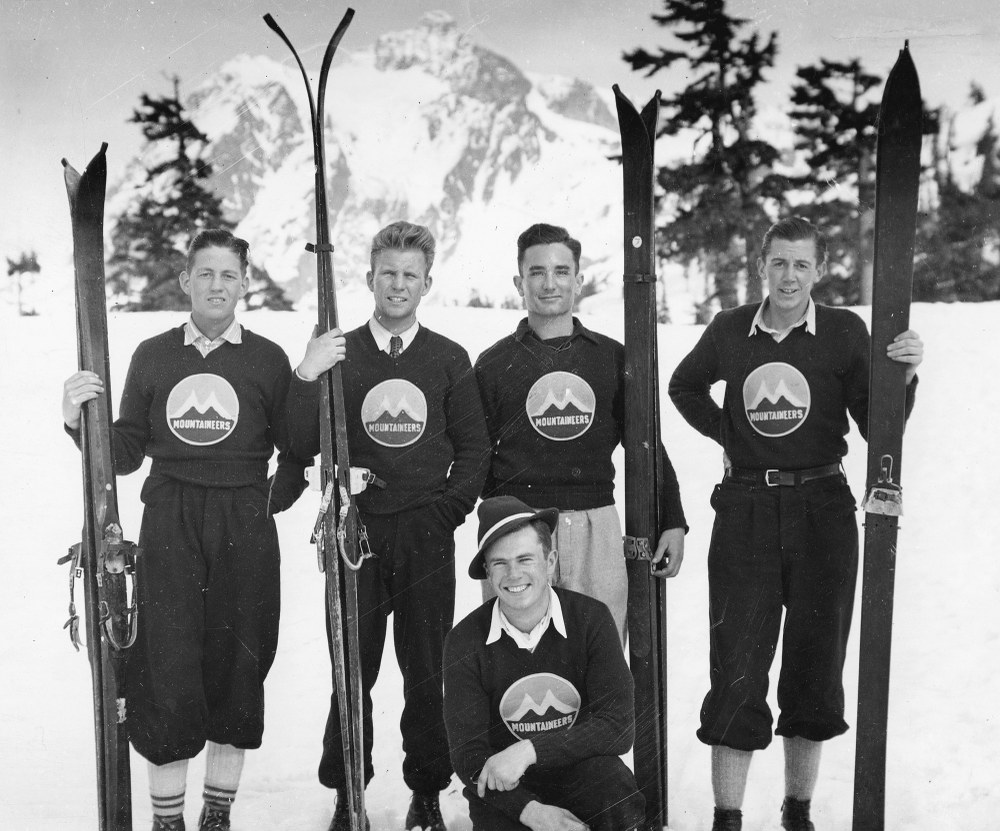
The 1930s were a decade of firsts for skiers. New technologies, techniques, and ski areas were opening possibilities for the sport that used to be associated only with the European elite. With the introduction of the rope tow, those unwilling to climb were able to enjoy the same downhill thrill, and its popularity exploded. The number of skiers doubled between the late 1920s and the early 1930s, with an estimated one million American skiers in 1936. This, paired with new types of skis, methods of instruction, and options for gear, catapulted the sport into the American consciousness, and skiing as we know it today began to take shape.
The Skis
Two new types of skis hit the market in the 1930s – laminated skis and aluminum skis. Laminated skis had been attempted before, combining woods like hickory or ash with lighter, more flexible woods like spruce or basswood to create a strong, lightweight, and springy ski. However, the glue used was not waterproof and as a result the skis would often delaminate after a few full days on the hill. The first successfully laminated skis were invented in 1932 using casein glues that could withstand moisture, allowing skiers to zip down the mountain without fear of their skis coming apart beneath them.
Mass production of aluminum skis and poles was also an exciting development for backcountry skiers, although they needed to be imported from Europe. Metal edges on wooden skis had been introduced in the mid-1920s, allowing skiers to edge more effectively. However, these edges were screwed into the wooden body of the ski and often came loose and could break. This resulted in many skiers carrying spare edges and tools to make field repairs, which was not ideal. Despite the comparative durability of aluminum skis, their limited availability meant that wooden skis remained popular in the states during this era.
The Threads
Much like today, ski fashion was a big element of the sport for many, especially as skiing gained popularity and ski clothing hit fashion magazines. Two-toned outfits were popular, with contrasting colors for the top and bottoms. The introduction of knit, stretchy yarn also meant that tight-fitting trouser and sleeve cuffs were now possible to keep out snow. Heavy wool was commonly used for its durability and ability to maintain warmth while wet, with a cotton flannel lining to avoid skin contact with the aggressively itchy fabric. Women wore wool ski pants like men, and many attribute the development of ‘sport clothing’ to women’s pants becoming the norm today.
The Techniques
Ski instruction began to take off in the 1930s as more and more novice skiers took to the slopes. These instructors were often associated with a club or hotel, and standards for education slowly took shape. The “Arlberg technique,” created by Hannes Schneider and popularized through ski instruction videos in the 1920s and 30s, became the dominant teaching methodology by the end of the decade. The technique focused on a turn progression, taking the skier from snowplow turns to parallel turns through a series of steps. Though we now have very different ski equipment, this technique and its many variations is still commonly taught at ski schools today.
This article originally appeared in our Winter 2020 issue of Mountaineer Magazine. To view the original article in magazine form and read more stories from our publication, visit our magazine archive.
 Hailey Oppelt
Hailey Oppelt